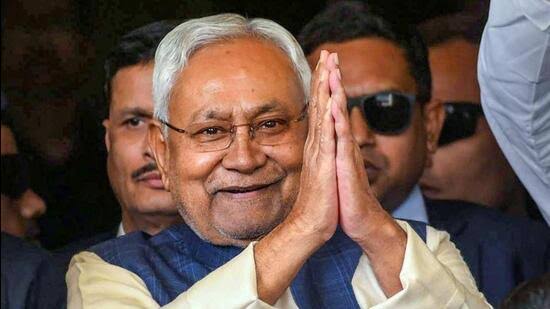Table of Contents
Introduction:
In the realm of Indian politics, Bihar stands as a significant battleground where alliances are forged and broken, and power dynamics constantly evolve. The recent floor test of the Nitish Kumar-led National Democratic Alliance (NDA) government in Bihar served as a microcosm of the larger political landscape, reflecting intricate power struggles, strategic maneuvers, and the ever-present specter of opposition.
Concerns Over Absenteeism:
The proceedings leading up to the floor test were not without their share of drama and intrigue. The absence of three crucial Janata Dal (United) MLAs raised concerns within the party and among political observers. Notable figures like Bima Bharti, Dilip Ray, and Sudarshan Kumar skipping crucial legislators’ meetings hinted at potential internal dissent or rifts within the party. This absenteeism, occurring on multiple occasions, underscored the fragility of political alliances and the challenges of maintaining party cohesion in a volatile environment.
Relocation to Chanakya Hotel:
To address concerns of further disruptions or potential defections, the JD(U) swiftly took proactive measures by relocating its MLAs to a hotel near the Assembly. This strategic move aimed to shield party members from external influences and ensure unity during critical legislative proceedings. By centralizing their operations and creating a conducive environment for discussions and strategizing, the JD(U) sought to minimize the risk of further disruptions and bolster their position ahead of the floor test.
Political Landscape and Alliance Dynamics:
Understanding the broader context of Bihar’s political landscape is crucial in deciphering the significance of Nitish Kumar’s victory in the floor test. With JD(U) holding 45 MLAs and BJP commanding 79, the NDA enjoys a formidable position in the 243-member Assembly. Additionally, with the support of allies like Hindustani Awam Morcha-Secular (HAM-S) and independent members, the NDA comfortably surpasses the majority mark required for governance. However, the intricate dynamics of regional politics and the delicate balance of power among coalition partners necessitate constant vigilance and strategic maneuvering to maintain stability and cohesion within the alliance.
Nitish Kumar’s Emphatic Victory:

Despite the initial concerns raised by the absence of certain JD(U) MLAs, Nitish Kumar emerged victorious in the floor test, securing an overwhelming 130 votes in favor of his government. This resounding mandate not only reaffirms Kumar’s leadership but also solidifies the NDA’s position in Bihar’s political landscape. Kumar’s ability to garner support from across party lines underscores his political astuteness and ability to navigate complex power dynamics.
Accusations and Counterclaims:
Leading up to the floor test, Nitish Kumar launched scathing accusations against the opposition, particularly targeting Tejashwi Yadav and his party, the RJD. Kumar’s accusations of corruption and his commitment to rooting out malpractices within the state set the stage for a contentious showdown during the legislative proceedings. In response, Tejashwi Yadav, representing the opposition, launched a spirited defense, promising to stand against the BJP and challenging Kumar’s recent political maneuvers. The acrimonious exchanges between Kumar and Tejashwi Yadav highlight the underlying tensions and power dynamics shaping Bihar’s political landscape.
Conclusion:
Nitish Kumar’s victory in the Bihar floor test signifies a significant milestone in the state’s political journey. However, the challenges that lie ahead are formidable. As Kumar’s government settles into its mandate, it faces the daunting task of addressing governance issues while navigating the complex web of regional alliances and opposition pressures. The drama and intrigue surrounding the floor test serve as a reminder of the inherent volatility of Indian politics and the constant need for political astuteness and strategic foresight in maintaining stability and ensuring effective governance.



